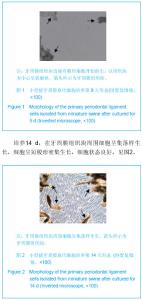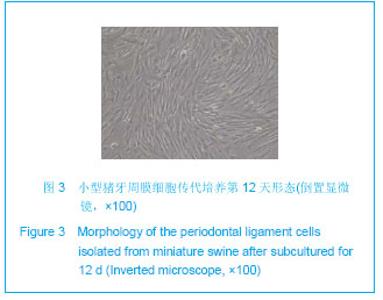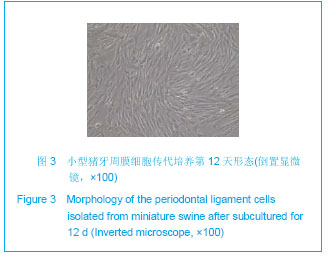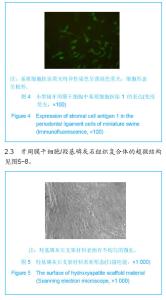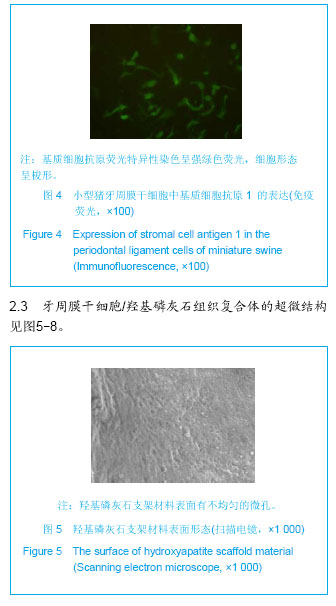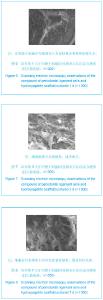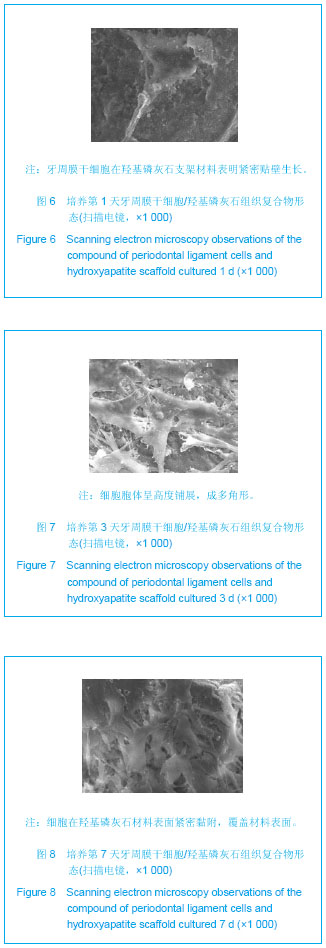| [1] Benatti BB, Silvério KG, Casati MZ, et al. Physiological features of periodontal regeneration and approaches for periodontal tissue engineering utilizing periodontal ligament cells. Biosci Bioeng. 2007;103(1):1-6. [2] Shi S, Bartold PM, Miura M, et al. The efficacy of mesenchymal stem cells to regenerate and repair dental structures. Orthod Craniofac Res. 2005;8(3):191-199.[3] Grynpa MD. Strontium increases vertebral bone volume in rats at a low dose that does not induce detectable mineralizaion defect. Bone. 1996;18(3):253-259.[4] Masataka Y, Norimasa T, Tadao T, et al. Osteogenic effect of hyaluronic acid sodium saltinthepores of a hydroxyapatite scaffold. Materials Sci Engin. 2007;27(2):220-226.[5] The Ministry of Science and Technology of the People’s Republic of China. Guidance Suggestions for the Care and Use of Laboratory Animals. 2006-09-30. [6] 张鹏涛,钟良军,张远,等.维甲酸诱导小型猪牙周膜干细胞的体外成骨[J].中国组织工程研究与临床康复, 2011,15(49): 9218- 9222.[7] Griffith LG, Naughton G. Tissue engineering-current challenges and expanding opportunities. Science. 2002;295 (5557):1009-1014. [8] Seo BM, Miura M, Gronthos S, et al. Investigation of multipotent postnatal stem cells from periodontal ligament. Lancet. 2004;364(9429):149-155.[9] 袁进,顾为望.小型猪作为人类疾病动物模型在生物医学研究中的应用[J].动物医学进展,2011,32(2):108-111.[10] Wang SL, Liu Y, Fang DJ, et al. The miniature pig: a useful large animal model for dental and orofacial research. Oral Dis. 2007;13(6):530-537.[11] Jo YY, Lee HJ, Kook SY, et al. Isolation and characterization of postnatal stem cells from human dental tissues. Tissue Eng. 2007;13(4):767-773. [12] Gronthos S, Zannettino AC, Hay SJ, et al. Molecular and cellular characterisation of highly purified stromal stem cells derivefrom human bone marrow. J Cell Sci. 2003;116(9): 1827-1835. [13] Buurma B, Gu K, Rutherford RB. Transplantation of human pulpal and gingival fibroblasts attached to synthetic scaffolds. Eur J Oral Sci. 1999;107(4):282-289.[14] 司徒镇强,吴军正.细胞培养[M].北京:世界图书出版公司,1996.[15] 赵瑾,袁晓燕,姚康德.组织工程多孔支架制备技术进展[J].化工进展,2002,21(9):644-648.[16] Grynpa MD. Strontium increases vertebral bone volume in rats at a lowdose that does not induce detectable mineralizaion defect. Bone. 1996;18(3):253-259.[17] Liao SS, Cui FZ. In vitro and in vivo degradation of the mineralized collagen- based composite scaffold: nanohydroxyapatite/collagen/polyZ (L-lactide). Tissue Eng. 2004;10(1):72-80.[18] Liao SS, Guan K, Cui FZ, et al. Lumbar Spinal fusion with a mineralized collagen matrix and rhBMP-2 in a rabbit model. Spine. 2003;28(17):1954-1960. |
